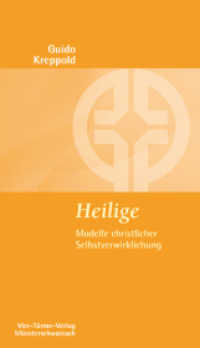Full Description
This book presents novel observational evidence toward detecting and characterizing the products of massive, interacting binary stars. As a majority of massive stars are born in close binary systems, a large number of so-called massive binary interaction products are predicted to exist; however, few have been identified so far. Based on observations with the largest telescopes around the world, equipped with state-of-the-art instrumentation, this book helps to remedy this situation. In her outstanding PhD-thesis Julia Bodensteiner identifies a new class of post-interaction binaries in a short-lived phase just briefly after the initially more massive star has been stripped of part of its envelope. She further provides new evidence for the Be phenomenon to largely result from binary interactions. These results represented a new and testable prediction for the evolution of these stars and opened up a new way forward for identifying hundreds of post-interaction products.
Finally,using the MUSE integral field spectrograph at the Very Large Telescope in Chile, the author presents a novel spectroscopic campaign focusing on the 40 Myr-old star cluster NGC 330 in the Small Magellanic Clouds. Combined with photometric observations from the Hubble Space Telescope, the MUSE data allow to characterize the entire massive star population of NGC 330, revealing their multiplicity properties and rotational velocities and providing unique observational constraints on their (binary) evolution history. This is made possible by the developments of novel numerical methods allowing to extract star spectra from the MUSE integral field spectroscopic data and to characterize their properties by the simultaneous comparison of MUSE spectroscopy and Hubble photometry with atmospheric models.
This book is a partly re-written version of the author's thesis offering a highly readable coherent text presenting not only new insights into the properties of binary interaction products but also giving students an excellent introduction into the field.
Contents
Introduction.- Spectroscopy of massive stars.- On the lack of main-sequence companions to massive Be stars.- Is HR 6819 a triple system containing a black hole? - An alternative explanation.- The young massive Small Magellanic Cloud Clusters NGC 330 seen by MUSE.- Summary and future work.- Appendices.








